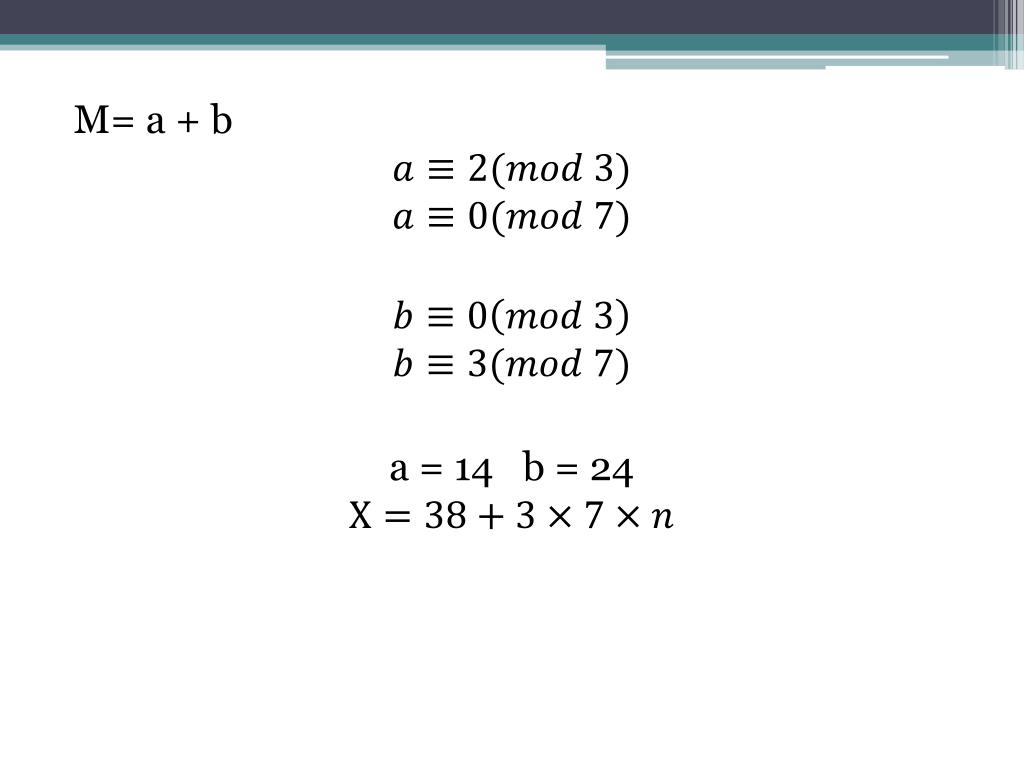Featured
Examples Of Chinese Remainder Theorem
Examples Of Chinese Remainder Theorem. The chinese remainder theorem says that certain systems of simultaneous congruences with different moduli have solutions. This simplifies the before mentioned reconstruction formula to:

We now present an example that will show how the chinese remainder theorem is used to determine the solution of a given system of congruences. In terms of rings, the chinese remainder theorem asserts that the natural map is an isomorphism. Result = 0 for i in range(len(n)):
Use The Extended Euclidean Algorithm To Nd That 15(1)+6( 2) = 3.
The ideal is the largest ideal of that is divisible by (contained in) both and. Card tricks and the crt; Let p, q be coprime.
As An Example, The Results Of Performing Addition, Subtraction, And Multiplication On The Two Numbers Mentioned Above Are X.
Consider two primes p and q. Consider the system of simultaneous congruences x 3 (mod 5); The key is that while the chinese remainder theorem is used in all the problems, it is not really
Result = 0 For I In Range(Len(N)):
I'm reading through a brief example of the chinese remainder theorem and am having difficulty understand the process they are going through. The idea embodied in the theorem was known to the chinese mathematician sunzi in the century a.d. Solve the simultaneous congruences x ≡ 6 (mod 11), x ≡ 13 (mod 16), x ≡ 9 (mod 21), x ≡ 19 (mod 25).
For Any System Of Equations Like This, The Chinese Remainder Theorem Tells Us There Is Always A Unique Solution Up To A Certain Modulus, And Describes How To Find The Solution Efficiently.
This allows for very easy computation, for example they have nice inverses (you can convince yourself of their correctness by computing m1⋅m1 and m0⋅1, expanding the result, and taking the modulus.): The n and a parameters are lists with all the related factors in order, and n is the product of the moduli. This result generalizes to rings of integers of number fields.
X = A ( Mod P) X = B ( Mod Q) Has A Unique Solution For X Modulo P Q.
In mathematics, the chinese remainder theorem states that if one knows the remainders of the euclidean division of an integer n by several integers, then one can determine uniquely the remainder of the division of n by the product of these integers, under the condition that the divisors are pairwise coprime (no two divisors share a common factor other than 1). The theory originated with the work of the chinese mathematician sun zi in the third century ad, though the whole theorem was first stated in 1247 by qin jiushao. Chinese remainder theorem is a very natural, intuitive concept, and therefore it is used most e ectively when we don’t think explicitly about having to use it.
Comments
Post a Comment